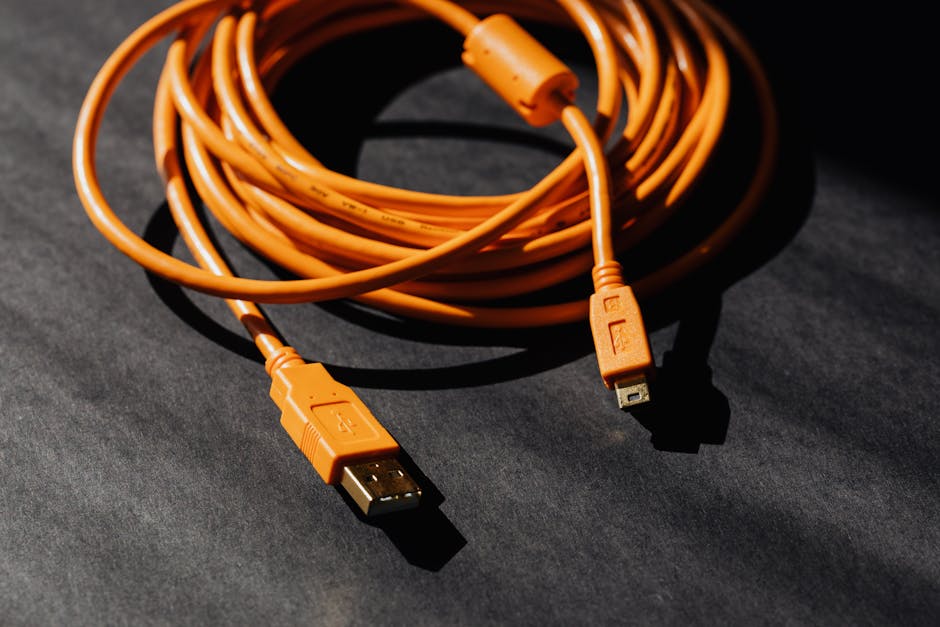Introduction to iPhone Battery Health
Your iPhone’s battery is like the heartbeat of your device. Keeping an eye on its health is crucial if you want to extend your phone’s life. Every charge cycle slowly wears down your battery’s ability to hold a charge, a process that’s both natural and unavoidable. After around 500 full charge cycles, which for many users means about two years, your iPhone’s battery begins to lose its stamina. That’s when you might notice your phone doesn’t last as long as it used to. It’s not just about the inconvenience of charging more often; a weak battery can make your phone slower and less responsive. Apple provides a handy tool within your iPhone’s settings under ‘Battery Health’ where you can check your battery’s maximum capacity and its peak performance capability. If the maximum capacity drops below 80%, it’s a sign your battery’s days are numbered, and you should consider replacing it to keep your iPhone running smoothly. Keeping your battery healthy means keeping your iPhone in top shape for longer, saving you money and hassle in the long run.
Recognizing the Signs That Your iPhone Needs a Battery Replacement
Noticing your iPhone isn’t holding a charge like it used to? Maybe it shuts down unexpectedly or you’re always hunting for a charging port by mid-afternoon. These are clear signals that your iPhone’s battery might be singing its swan song. First off, if your iPhone struggles to get through a day on a full charge, especially when you’re using it lightly, it’s a big red flag. Second, an iPhone that powers down unexpectedly, even with a decent amount of charge shown, is screaming for a battery swap. Apple’s built-in battery health tool is your best friend here. If your battery health is below 80%, your iPhone is telling you it’s time for a new battery. Feeling like your iPhone is slower than usual? That’s because iOS might be throttling your device performance to prevent it from crashing due to a weak battery. All these signs are your iPhone nudging you, saying, “Hey, I need a little battery boost here!” Don’t wait until it’s too late, or you might find yourself with a dead phone at the most inconvenient time.
How iPhone Battery Replacement Can Extend Your Device’s Lifespan
Swapping out an old iPhone battery for a new one is a game changer. Why? Well, first off, iPhone batteries aren’t designed to last forever. After a certain number of charge cycles, they start losing their juice faster. This means your phone dies quicker, even if you’re not using it more. But when you replace the battery, it’s like giving your iPhone a new lease on life. Suddenly, it holds a charge much longer, making it feel almost new again. Plus, getting a fresh battery can prevent other phone issues related to a dying battery. Think about it - no more sudden shutdowns or the dreaded slow performance. Basically, if you want to keep your iPhone running smoothly for as long as possible, getting that battery swapped out is a smart move. It’s an affordable fix that drastically improves your phone’s lifespan and overall experience. So next time you notice your iPhone can’t hold a charge like it used to, consider a battery replacement. It’s a straightforward step with a big impact.
The Risks of Ignoring iPhone Battery Replacement Needs
Ignoring iPhone battery replacement needs can lead to a handful of problems. First off, your phone might start shutting down unexpectedly, even when the battery indicator shows there’s still juice left. This isn’t just annoying; it can mess up your day if you rely on your phone for important tasks or emergencies. Then there’s the issue of performance. An old battery can make your iPhone act sluggish, taking forever to open apps or load web pages. It’s like forcing an athlete to run with weights tied to their ankles. And, let’s not forget about the potential danger. A battery past its prime could swell up, pushing against your iPhone’s screen or back cover, and in extreme cases, it might even cause the phone to crack open or, worse, catch fire. Lastly, hanging onto a dying battery can actually cost you more in the long run. You’ll likely end up charging your phone more often, wearing down other components and possibly leading to more repair costs down the line. So, it’s simple—replacing your iPhone’s battery on time keeps it running smoothly, safely, and can save you money and hassle.
When to Consider an iPhone Battery Replacement: Key Timeframes
Noticing your iPhone doesn’t last as long as it used to? It might be time to think about a battery replacement. Generally, an iPhone battery is good for about 500 charge cycles. That means after charging it 500 times, you’ll start to see it doesn’t hold a charge like it did when it was new. For most users, this is around 18 to 24 months of use. Apple suggests replacing the battery once it reaches 80% of its original capacity. You can easily check your battery health by going to Settings > Battery > Battery Health on your iPhone. If it’s below 80%, consider a replacement to keep your iPhone running smoothly and extend its lifespan. Waiting too long can strain other components, so act when you hit that key timeframe to avoid more issues down the line.
iPhone Battery Replacement Options: DIY vs Professional Service
When it comes to extending your iPhone’s life, choosing the right battery replacement option is crucial. You’ve got two paths: Do It Yourself (DIY) or go for a Professional Service. Let’s break it down.
DIY is the budget-friendly path. You buy the battery and tools, watch a couple of tutorials, and you’re set. It sounds easy, and it can be, but it’s not without risks. If you’re not careful, you might damage your iPhone, and that’s a gamble. Plus, no guarantee or support if something goes wrong.
On the flip side, Professional Services cost more but come with peace of mind. You get expertise, guarantees, and no risk of accidental damage. It’s the worry-free option. Plus, if there’s an issue, they’ve got your back.
In short, if saving money is your goal and you’re handy, DIY might work for you. But if you want to ensure your iPhone’s longevity without the stress, professional is the way to go.
The Cost of iPhone Battery Replacement: What to Expect
Replacing your iPhone’s battery isn’t as costly as getting a new phone, but it’s not free. How much you’ll pay depends on your iPhone model and where you get the service. If you go to an authorized Apple service provider, expect to pay between \(49 to \)69 for most iPhone models. The newest models might cost a bit more. If your iPhone is still under warranty, or if you have AppleCare+, this cost could be covered, making the replacement free. Going to a third-party repair shop might seem cheaper at first glance; however, it can void any remaining warranty you have. Plus, the quality of the repair might not be up to mark, risking your iPhone’s health in the long run. So, while saving a few bucks upfront might sound good, it might cost more if it leads to bigger problems down the line. It’s a trade-off you’ll have to consider.
How to Prepare for an iPhone Battery Replacement
Before you dive into getting your iPhone’s battery replaced, a bit of prep work ensures the process is smooth. First off, check if you really need a battery swap. If your iPhone is slow or dies fast, it’s a hint. Now, back up your data. Use iCloud or iTunes so you don’t lose anything important. Next, turn off Find My iPhone and erase your data for security reasons. You can do this in Settings under your Apple ID, then Find My, and select your device to turn it off. Remember to erase your device by going to Settings, hitting General, then Reset and “Erase All Content and Settings”. Finally, know your options: Apple Store, authorized service provider, or a reliable local repair shop. Pick one and set up an appointment. Keep these steps in mind, and you’re all set for a hassle-free battery replacement.
Caring for Your iPhone Battery: Tips for Optimization and Longevity
Taking good care of your iPhone’s battery isn’t just about keeping it charged; it’s about keeping it healthy so your phone can last longer without needing a replacement. Here’s how you can optimize your iPhone battery’s life and ensure it serves you well for years. First, avoid extreme temperatures. Your iPhone hates extreme cold and heat just as much as you do. Try to keep it in environments between 62° to 72°F (16° to 22°C) for optimal performance. Next, update your iOS software regularly. Updates often include battery life improvements, so staying current can make a significant difference. Also, mind your charge cycles. It’s a myth that letting your phone die completely before charging is beneficial. Instead, try to keep your battery between 20% and 80%. This avoids full 0-100% charge cycles, which can stress the battery over time. Another tip is to enable Low Power Mode when your battery starts getting low. This feature conserves energy by turning off background app refresh, automatic downloads, and certain visual effects until you can charge your phone again. Lastly, check your battery’s health in Settings under Battery Health. If it shows your battery’s maximum capacity is under 80%, it’s a sign that your battery is wearing out and you might want to consider replacing it to extend your phone’s life. By following these simple steps, you can keep your iPhone running efficiently and possibly avoid the need for premature battery replacement.
Conclusion: The Overall Importance of Timely iPhone Battery Replacements
So, wrapping it all up, getting your iPhone’s battery replaced on time is crucial. It’s not just about squeezing extra life out of your gadget. A healthy battery means a smoother, faster iPhone experience. Ignoring battery health can slow down your device considerably. Remember, when your iPhone starts acting sluggish or can’t hold a charge like it used to, it’s probably shouting for a new battery. And yes, while it might seem like a bit of a hassle or an extra expense, think of it as investing in your iPhone’s future. A battery swap is a small price to pay to keep your device running at its best for longer. In the end, timely battery replacements save you time, money, and a load of frustration. Keep your iPhone happy, and it’ll keep you connected without a hitch.


Share and get 15% off!
Simply share this product on one of the following social networks and you will unlock 15% off!